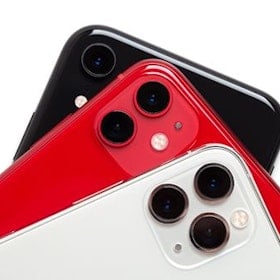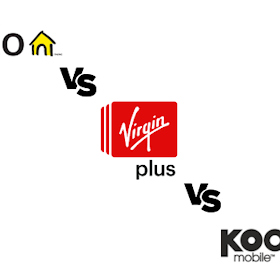 The HTC One SV is a mid-range 4G LTE smartphone that, despite it’s confusing name, really has nothing to do with the HTC One V. More accurately, it’s closer to being an upgraded version of the HTC One S.
The HTC One SV is a mid-range 4G LTE smartphone that, despite it’s confusing name, really has nothing to do with the HTC One V. More accurately, it’s closer to being an upgraded version of the HTC One S.
While it’s true that HTC we expect HTC to unveil some shiny new gadgetry on February 21st (three days hence), we still thought that we’d grab ourselves a One V and take it for a test run.
HTC One SV Design
The HTC One SV’s physical design isn’t really what you’d call ‘classic HTC design’. That’s not to say that the build quality is any more or less than what we’ve come to expect from HTC; it just exhibits a bit of a different approach than what someone with a degree of familiarity with the brand might expect.
The build of the One SV is one of the more impressive we’ve seen. It’s not the most unique in appearance, but a mixture of rubberized plastic, glass and (we think) brushed aluminium makes for an incredibly well balanced device. The three different materials fit together with very little space left in between, making for an end result that has a reassuring weight without being too heavy, is easy to hold and modern in appearance.
Its tapered profile is very thin at the edges but curves out convexly in the middle. Even at its thickest point it’s still fairly thin. The overall size of the device isn’t huge either, requiring minimal extra space around the 4.3 inch display.
We have to say that we can’t recall another handset that was as easy or comfortable to hold as the HTC One SV.
Some carriers and vendors even offer versions with colorized rear and side plating, although not everybody does. Even so, our black model might not have been the belle of the ball but, like we said, it’s definitely still a stylish piece of gadgetry.
Below the display are three capacitive buttons, meaning that the UI doesn’t utilized the virtual keys implemented back with Android 4.0 ICS. This is either a good or bad thing depending entirely on what kind of interface the user prefers. We’re quite happy to use either, so it didn’t affect our experience.
The right-hand volume rocker is well situated and we didn’t have too many accidental volume changes when keeping it in a pocket. The lock/power button is sitting on top, as per usual, as is the 3.5mm headphone jack. The USB charging port is at the bottom, where all good USB jacks should be (in our opinion) and the top speaker functions for both phone audio and stereo music provider.
 Speed, Display and UI
Speed, Display and UI
As far as general smartphone-experience goes, in terms of smoothness, aesthetics and functionality of the UI, the HTC One SV is one of those smartphones that is simultaneously good and totally ‘standard’. Of course, a phone like this is never designed to stand outside of the pack, which is good, because firmly within the pack is exactly where the One SV stands.
The 480x800 resolution is a teensy bit disappointing, as we were expecting 540x960, but it doesn’t really detract from the overall experience. The screen is responsive, colorful and renders whites very clearly. Blacks could be a bit more inky and, as we said, the resolution could be better, but these minor faults didn’t tend to reach out of the screen and rip us from whatever immersion we may have been feeling.
The HTC Sense UI is, as usual, attractive, smooth and functional. The lock screen that we once got very excited over still hasn’t changed and so, while it continues to be quite handy remains one of the better lock screens around, it now has very similar offerings to many of its competitors. Email, Text, Phone and Camera can all be directly accessed from here or simply checked for notifications at a glance without first unlocking the device. Useful, but increasingly standard.
 Browsing and Keyboard
Browsing and Keyboard
Of course, 4G LTE is the real reason the HTC One SV exists at all. If it weren’t for 4G, the differences between the One S and the One SV would have been negligible. However, as anyone who’s recently made the switch to 4G and lives in a well-supported area, 4G makes all the difference.
Web pages load with the speed of a good landline broadband connection. Users on picture-heavy sites like Tumblr and Facebook barely have to wait and video streaming is an absolute breeze. Of course, 4G LTE connectivity isn’t exactly common the world over yet and is usually only available on a limited number of carriers and even then in specific areas. Still, 4G LTE really is enough of an upgrade to drastically change the overall experience of a device, assuming the user actually frequents internet services.
The browser itself didn’t seem particularly fast or slow, once again fitting in to the One SV’s penchant for being reliable without ever making the leap to impressive or extraordinary. Websites loaded with satisfactory expediency, the pinch to zoom function operated smoothly for the most part and the screen is large enough to make browsing easy.
Typing was also good. The HTC keyboard was one of the first default keypads that could keep up with our speedy, if fat, fingers. These days on-screen touchkey refresh-rates tend to well outpace all but the speediest typists so this is no longer a notable feature, yet it’s still worth remarking that we encountered no issues.
The large(ish) display made it a simple matter to type in landscape and we could even handle portrait, albeit at a slightly slowed rate.
 Camera
Camera
The 5MP camera was good but not great. Most Android and WP users would be used to this kind of thing by now; the camera that takes great photos on well-lit days but suffers when it’s overcast, in-doors or after dusk.
It was more than passable for a smartphone in this price range and we didn’t find ourselves disappointed. Actually, for a 5MP it was pretty good. It’s true that the number of MP a camera has should be no way to measure it, but in general, at least with smartphones, higher MP cameras tend to have seen a greater level of effort put in to their overall construction, leading to a better shooter.
Unfortunately for the One SV, it didn’t seem to go with HTC’s new “ultrapixel” mantra that less is better, but it still functioned well as a casual shooter.
Like most mid-range devices, the One SV’s video recording wasn’t stellar, or even particularly great. Once again on bright, sunny days it was pretty good, but in general we’d suggest any avid movie-shooters shy away. Casual users shouldn’t have any problems, however.
 Music and Media
Music and Media
Music is an area where HTC has been doing well, ever since it brought aboard BeatsAudio. Of all the Androids we’ve tried, we have to say that HTC devices with Beats activated give out the best sound when played through headsets. Bass is deep without distorting, treble is great without being too tinny and the mid-grounds all come out clearly. Of corse, this will also depend on the quality of headphones the user is wearing, so don’t go expecting those $6 earbuds to transport you to another realm of music, just because you’ve plugged them in to an HTC.
Video, thanks to the vibrant colors and clear whites, was surprisingly good. We say surprisingly because 480x800 displays aren’t often too impressive. While the One SV didn’t really outdo itself in this department, we did still find watching videos pretty enjoyable, although viewers who are used to HD displays may have a different opinion.
The WhistleOut Opinion
The HTC One SV, despite having been out for some time now, is still probably one of the more reliable and solid mid-range Android experiences on the market. It’s sure to be overtake in the next few months, but for a 4G LTE device in its price range we were definitely happy with it.
The design, as we said, is one of the absolute best we’ve ever held in terms of build-quality. Stylistically it also passed as quite pleasing to behold, if not breath-takingly beautiful.
The camera was passable, music and video were good, the UI was smooth and fast and the battery easily lasted a whole day. The HTC One SV definitely gets a thumbs up from us for anybody looking to compare mid-range smartphones. However, at this point in the game we’d suggest waiting a little while, assuming that you feel you can do that, and seeing what the next few months have in store.



Find Better Phones and Plans
Hundreds of cell phone plans unpacked. All the facts. No surprises.







































